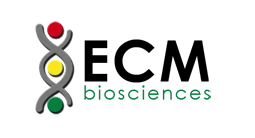
Cadherins are transmembrane glycoproteins vital in calcium-dependent cell-cell adhesion during tissue differentiation. Cadherins cluster to form foci of homophilic binding units. A key determinant to the strength of the cadherin-mediated adhesion may be by the juxtamembrane region in cadherins. This region induces clustering and also binds to the protein p120 catenin. The cytoplasmic region is highly conserved in sequence and has been shown experimentally to regulate the cell-cell binding function of the extracellular domain of E-cadherin, possibly through interaction with the cytoskeleton. Many cadherins are regulated by phosphorylation, including N-cadherin and E-cadherin. P-Cadherin (Cadherin-3) is localized in placenta while E-Cadherin (Cadherin-1) and N-Cadherin (Cadherin-2) are found in epithelial and neural tissues, respectively. P-Cadherin is expressed in normal epithelial cells and some cancer cells, and its sequence contains 5 cadherin domains in the extracellular region.
References

Western blot image of human A431 cells(lanes 1-4). The blots were probed with mouse monoclonals anti-E-Cadherin (Cytoplasmic) at 1:1000 (lane 1) and 1:4000 (lane 2) and anti-E-Cadherin (C-terminal fragment) at 1:250 (lane 3) and 1:1000 (lane 4).

Western blot image of mouse brain lysate immunoprecipitated with no antibody (lane 1), anti-N-Cadherin (CP1751) rabbit polyclonal antibody (lane 2), and whole mouse brain lysate (lane 3). The blot was probed with anti-N-cadherin (Cytoplasmic) mouse monoclonal antibody (lanes 1-3) and detected using anti-Mouse Ig Light Chain specific:HRP secondary antibody.
The products are are safely shipped at ambient temperature for both domestic and international shipments. Each product is guaranteed to match the specifications as indicated on the corresponding technical data sheet. Please store at -20C upon arrival for long term storage.
*All molecular weights (MW) are confirmed by comparison to Bio-Rad Rainbow Markers and to western blotmobilities of known proteins with similar MW.
Product References:
CP1751 Chang, Y.J. et al. (2014) Mol Cell Biol. 34(6):1003 WB: PC12-SH2B1β cellCP1921 Gu, H. et al. (2014) FASEB Journal 28(10):4223. WB: human small airway epithelial cellsCP1921 SalaheldeenE. et al. (2014) J Histo Cytochem. 62(9):632. WB: seminiferous tubulesCM1681 Milara, J. et al. (2013) Thorax. 68(5):410-20. IF: human pulmonary tissueCM1681 Vittal, R. et al. (2013) AJP Lung Cell Mol Phys 304(6):401. WB: Rat & Human Epithelial CellsCP1751 Sato, F. et al. (2012) Intern J Molec Med 30:495. WB: Human pancreatic cancer BxPC-3 cellsCP1751 Wu, Y. et al. (2012) Int J Oncol. 41(4):1337. WB: human pancreatic cancer cells (PANC-1 PaCa-2)CM1701 Wang, T.C. et al. (2011) J. Cell. Physiol. 226:2063. WB, ICC: rat PC12 cellsCP1751 Ferreri, D.M. et al. (2008) Cell Comm Adh. 15(4):333. WB: human, bovine VECsThis kit contains:
| CATALOG# | DESCRIPTION | SIZE | APPLICATIONS | SPECIES REACTIVITY | MW (kDa) |
CM1681 | E-Cadherin (Cytoplasmic) Mouse mAb | 50 μl | WB, E, IP, ICC, IHC | Hu, Rt, Ms | 120 |
CM5331 | E-Cadherin (C-terminal fragment) Mouse mAb | 50 μl | WB, E | Hu, Rt, Ms | 120 |
CP1921 | E-Cadherin (a.a. 774-786) Rabbit pAb | 50 μl | WB, E | Hu, Rt, Ms | 120 |
CM1701 | N-Cadherin (Cytoplasmic) Mouse mAb | 50 μl | WB, E, IP, ICC | Hu, Rt, Ms | 130 |
CP1751 | N-Cadherin (a.a. 811-824) Rabbit pAb | 50 μl | WB, E, IP, ICC | Hu, Rt, Ms | 130 |
CM5961 | P-Cadherin (N-terminal region) Mouse mAb | 50 μl | WB, E, ICC | Hu, Rt, Ms | 120 |
KIT SUMMARY
The cadherin family antibody sampler kit can be used to detect the expression level of E-cadherin, N-Cadherin, and P-cadherin. The kit includes high affinity mouse monoclonal and rabbit polyclonal antibodies to examine cadherin expression levels in western blot, ELISA, immunoprecipitation, and immunocytochemistry.
ebiomall.com






>
>
>
>
>
>
>
>
>
>
我现在做关于细胞膜分子交联,然后用western检测多聚体的实验
遇到很大的困难
刚开始用真核细胞做,就发现细胞交联后提取蛋白,比未交联的细胞蛋白总量减少
后来用原核先提取蛋白做实验
发现交联终止后,做western交联的孔曝光没有条带,后来用同样的方法重新做了一次PAGE,染胶,发现蛋白不见了
为什么交联后蛋白减少或是不见了呢
我用的都是Pierce公司的交联剂,用过EGS和BOSCOES,都有同样的问题
方法是综合说明书和一片文献上来的
到底问题出在哪里呢
请各位大侠帮帮忙
实验卡在这里进行不下去了
我快急死了
请有经验的,用过交联剂的老师,同学多多指导
万分感谢!!
1。什么叫切断条件。是不是不能切断的话就不能释放出药物
2。透膜性是什么意思。是不是指如果药物要进入细胞内的话就要选有透膜性的交联剂
3。间臂长度是不是臂越长越好
4。iodinatable是什么意思
谢谢大家!
==============
请遵守药学区发帖格式!请参阅本版“发帖须知新手指南”!
多谢您的支持!
不知道你想做什么产品?
具体的反应条件会影响作出的产品
对在动物体内发生免疫反响而言,大多数多肽的分子量都太小。将多肽与载体蛋白如KLH等交联以后,不仅能添加抗原的巨细,也能增强免疫性。咱们能够提供与KLH和BSA两种蛋白的交联。大多数客户挑选与KLH交联,由于KLH的免疫性非常好,而且BSA在许多试验中作为Blocking试剂,由于动物体内既会发生对多肽的抗体也会发生对载体蛋白的抗体,这么会呈现假阳性。
二、抗体的运用
由于抗体与许多生物分子,以蛋白和多肽等尤为明显,有很强的联系才能,抗体在生物医学研讨中占据共同的主要位置,在对蛋白的特性、含量的测定、散布状况的分析和蛋白的确证等方面都需要用到抗体。例如:确诊试剂盒如早孕试剂盒等,蛋白microalloy、immunohistochemistry 和普通的ELISA试验等。由于抗体有对特定分子很强的联系才能的特点,用抗体进行体内医治成了许多尽力的方向。成功的典范包含Genetech的Herceptin,用于医治一类特殊的乳腺癌和IDEC药业公司的Ritaxan,用于特定类型的Non-Hodgkin`s Lymphomas B-细胞。
三、抗原和辨认区域
大多数状况下,antigen和immunogen两个字是能够交换运用的,它们的差别是很小的。他们是别离指一个分子与免疫系统之间的两种类型的相互作用。一个immunogen是指能使一个生物组织的免疫系统发生免疫反响的分子,而一个antigen是指能与这种免疫反响的产品联系的分子,所以immunogen一定是antigen,但antigen纷歧定是immunogen,咱们这儿通用antigen,特指能与免疫反响的产品—抗体联系的分子。 辨认区域(epitopes)是指一个抗原分子中一个与抗体直接联系的一段特定的序列,关于任何抗原(抗原蛋白),很有可能有多个抗体辨认区域,对出产抗体而言,易于抗体辨认的部位的辨认区域最为理想。
四、进行KLH交联的化学办法
我们用MBS活化KLH,这么能将载体蛋白(KLH)上面的自在-SH与多肽末端的Cys的侧链-SH连接起来,这种办法直接,特异性高,而且安稳,一般挑选对免疫不主要的一端进行交联。 EDC活化载体上的-COOH,将载体的-COOH和多肽的-NH2连接起来也是一种可行的办法。但咱们只主张在多肽序列中有多个Cys时采用该办法。如果肽链中含有多个-COOH或-NH2基因,不主张运用该办法,由于会构成多重点交联的状况,使多肽构造受影响。常用载体蛋白除KLH外,还有BSA,Ovalbumin等,构成KLH的优势是它不搅扰ELISA或Western Blot等试验。
五、对抗原多肽交联适宜的肽链长度
一般主张10-15个残基进行交联。肽链越长,抗体辨认的区域越多,但也就越多时机构成安稳的二级构造。就不再是天然的方式了。太短的肽一般是没有用的,除非有足够的理由,如与有关宗族蛋白或别的蛋白有序列同源性等。
六、KLH交联多肽溶液呈乳状的要素
KLH是一个很大的而且聚合的蛋白。由于它的构造和巨细,它在水中的溶解度是很有限的,因而是乳状,这并不影响它的免疫性,这种混浊的溶液能够直接免疫动物。
七、抗体的产值
抗体的产值取决于许多要素:辨认区域的挑选,多肽的合成,载体的交联,免疫的操作步骤和动物的生理系统等等,因而抗体的产值是不等的。5-25mg都归于正常规模。
本人使用的Collagen是sigma公司的,TypeI,BovineCollagenSolution,浓度为6mg/ml,用浓度为1M的NaOH溶液进行中和。200微升Collagen用了30微升的NaOH溶液,在调PH过程中有絮状物质产生并有局部凝胶,然后将调好PH的Collagen放至细胞培养箱中进行培养,2个小时之后也没有凝胶。是NaOH溶液加多了还是没有搅拌均匀,现在还在摸索阶段,不知道具体该加多少NaOH,还有如何将溶液混合均匀是个问题。求大神指导
转谷氨酰胺酶(TG)、过氧化酶(POD)、多酚氧化酶(PPO)交联
戊二醛,便宜,但有毒性
EDC,无毒性,但较贵
SMCC ,DSS,DST MBS,SPDP
请各位高手指点一下小弟吧!









